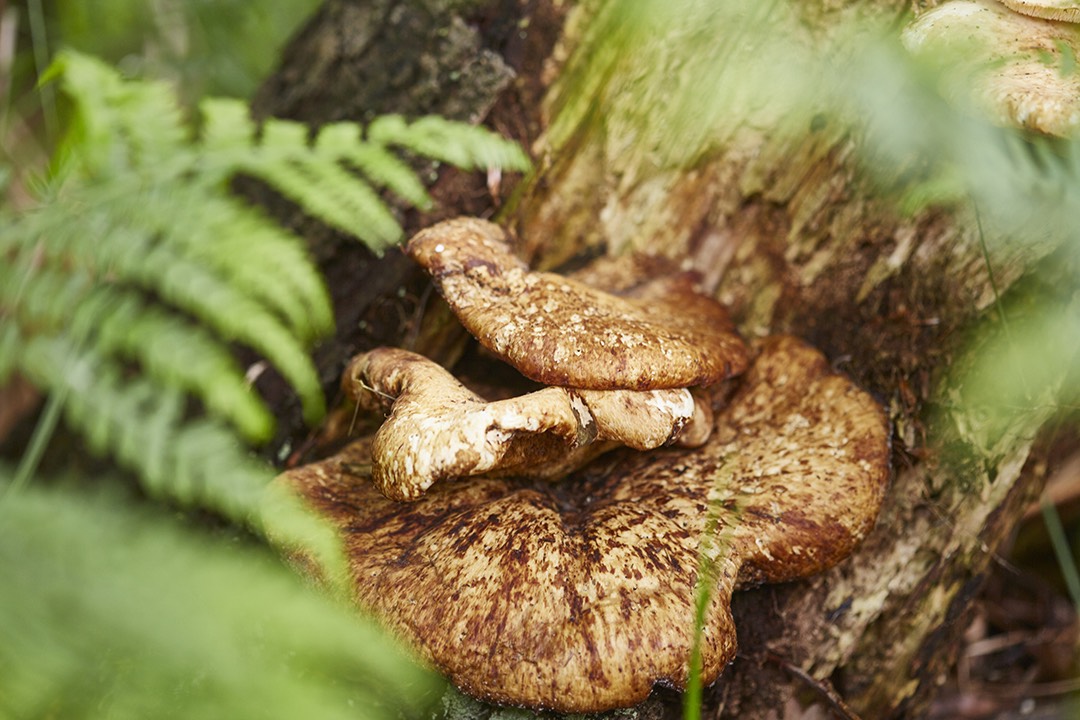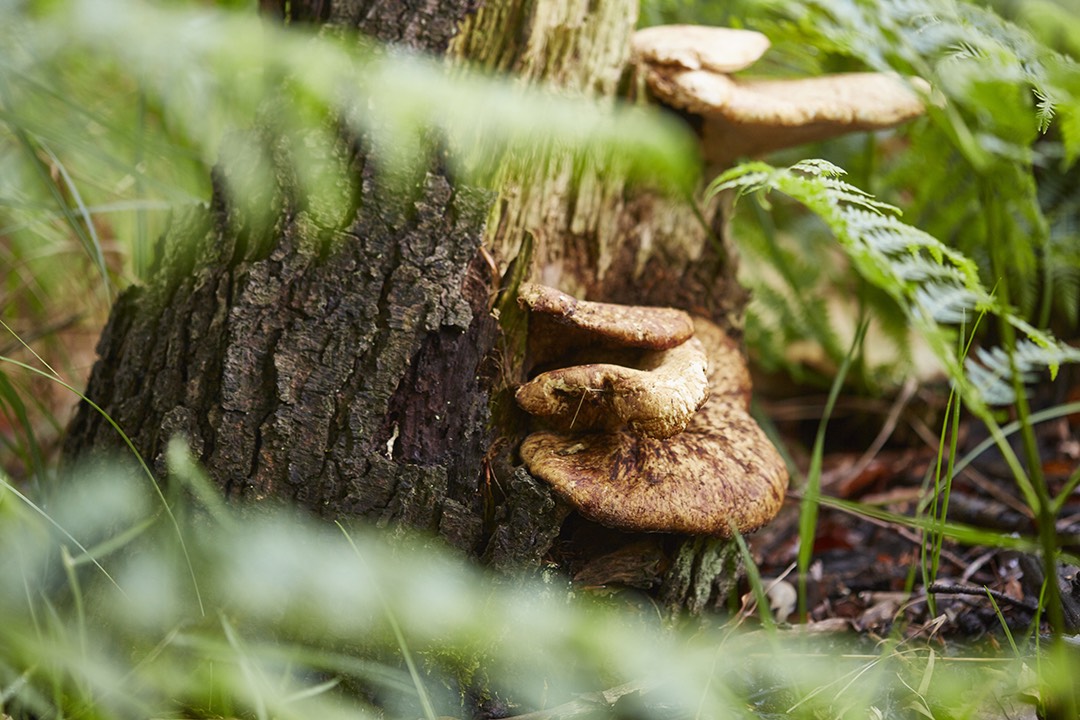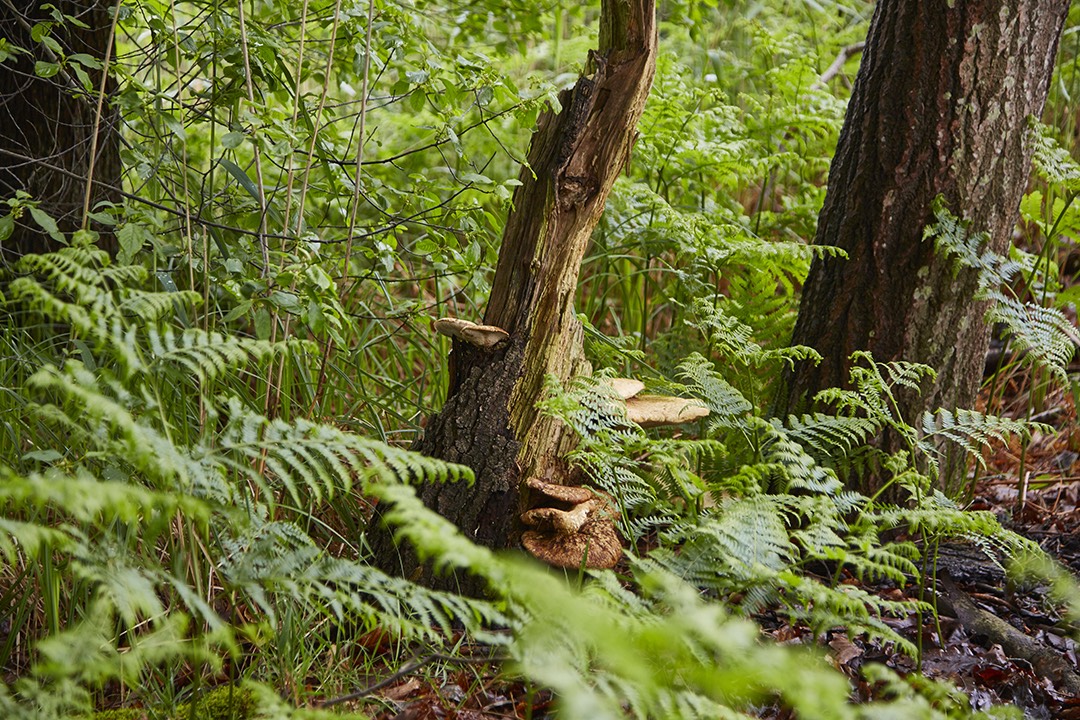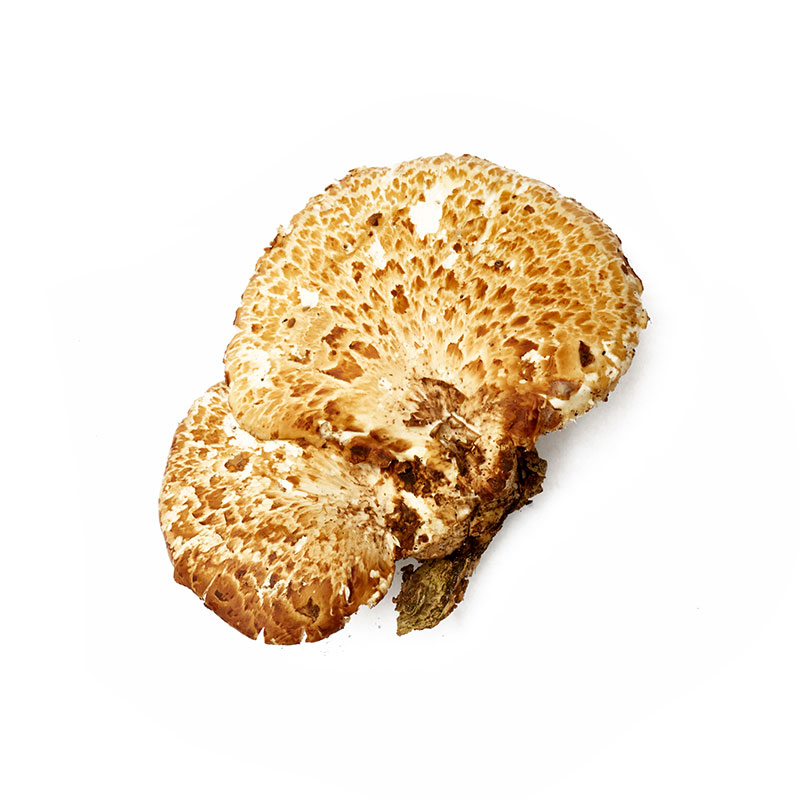



Dryad's saddle
Dryad's saddle is a behemoth of a mushroom with fruiting bodies that reach half a meter in size. It's also one of the great edible mushrooms of spring.
-
Where to Find It
Dryad's saddle feeds on dying hardwood trees, especially beeches. It tends to grow on trees that are frequently pruned, such as those in gardens and parks and along roads. In many cases you'll find the mushroom high up on the trunk, where it sets to work decomposing the tree. A branch that's attacked by dryad's saddle near the trunk will eventually fall off; the mushroom will continue growing on the broken limb as it rots on the forest floor.
Deciduous forests, towns, hedges.
-
When to Find It
Dryad’s saddle grows most abundantly in May and June, but you can also find it later in the summer.
Entire mushroom: May, June.
-
How to Spot It
The light brown, scaly caps of Dryad’s saddle adhere directly to rotting trees, where they grow to a diameter of 30 to 50 cm. The underside of the cap, which grows at a slant down the short, thick stem, is covered in a rough layer of pores that take the form of a funnel. The pores are white; the stem is cream-colored near the cap, but dark brown toward the tree. Dryad's saddle grows either as a single specimen or in small groups.
-
How to Pick It
Only the young, soft specimens of dryad's saddle hold culinary interest, and only the cap—which can be easily removed with a knife— is worth foraging. The stem is too tough to eat.
Risk of misidentifying the plant
There are other polyporales, but none gets as large as Dryad’s saddle, nor taste as good. The others, however, are safe to eat once they've been cooked.

